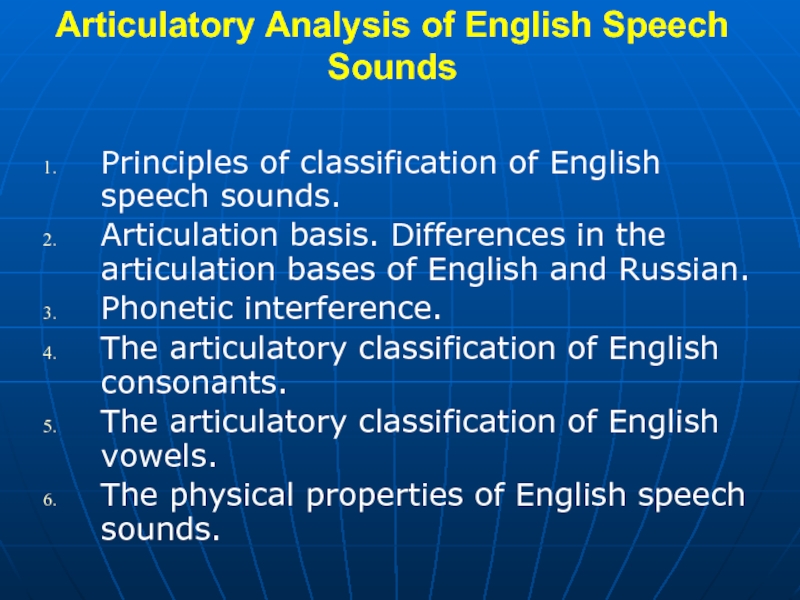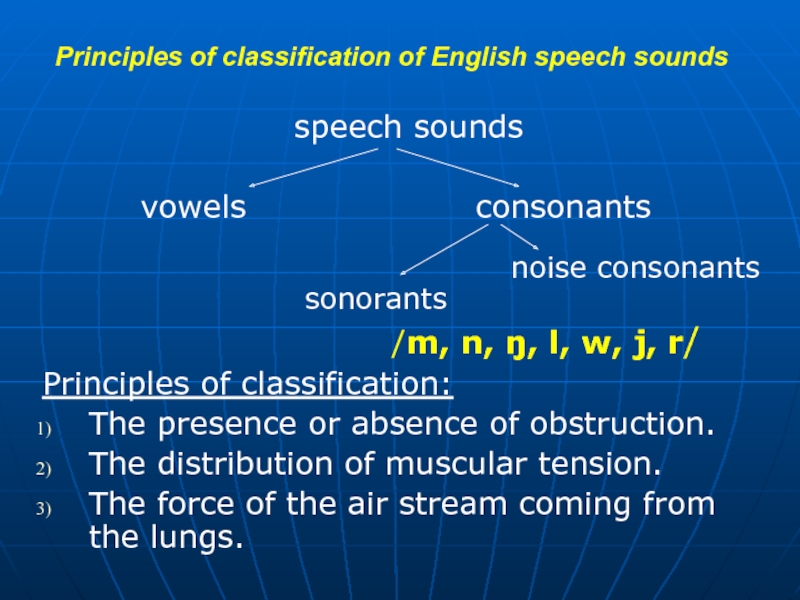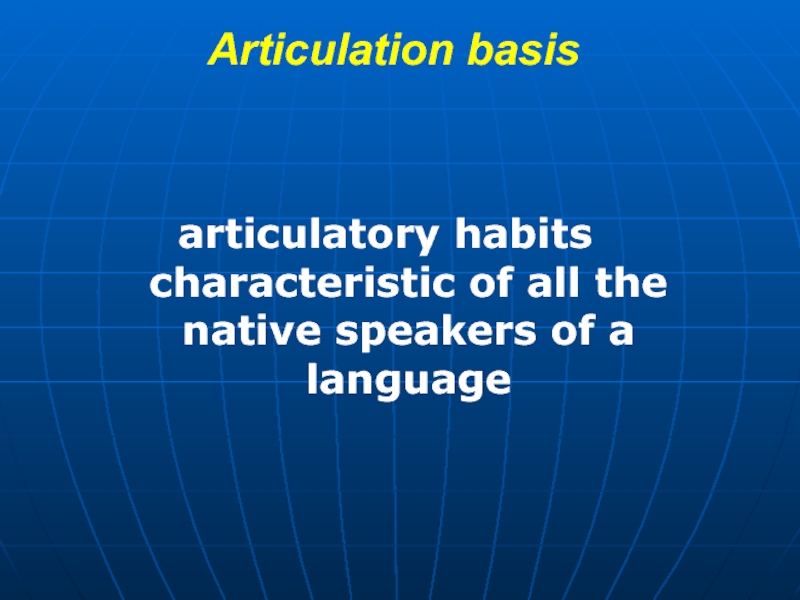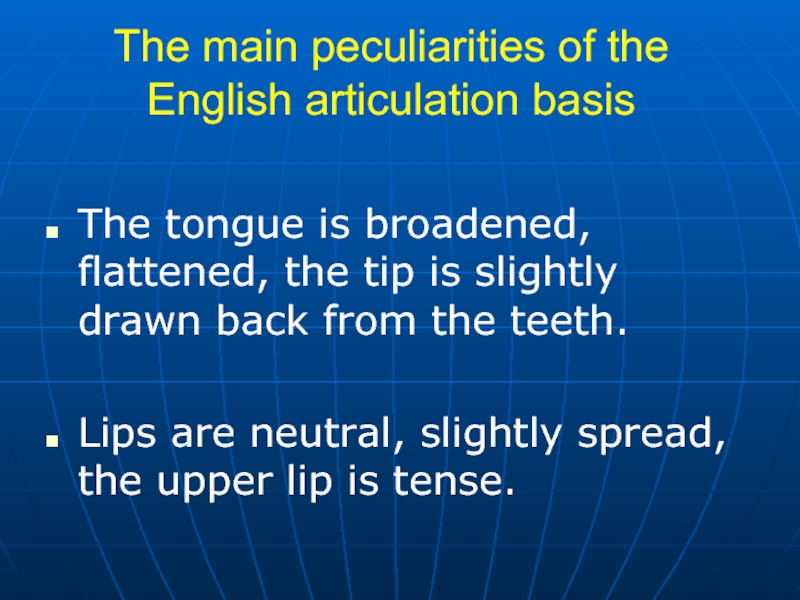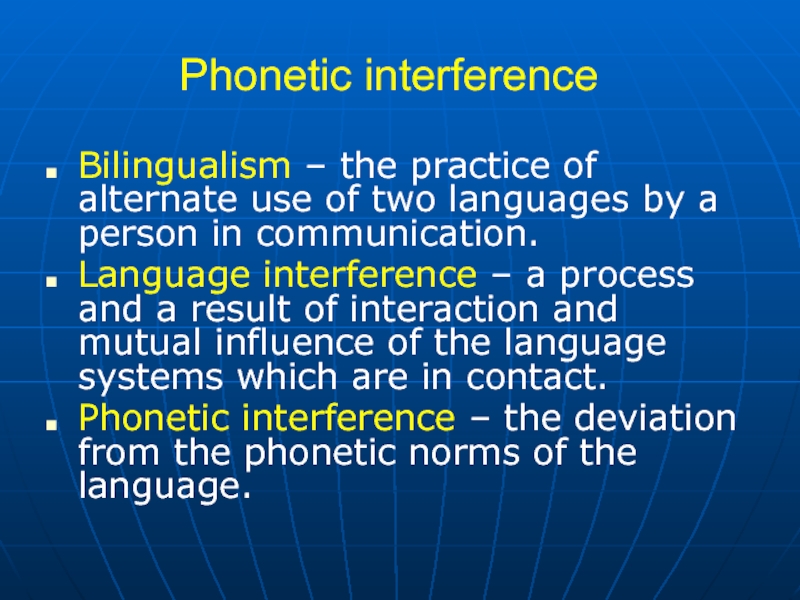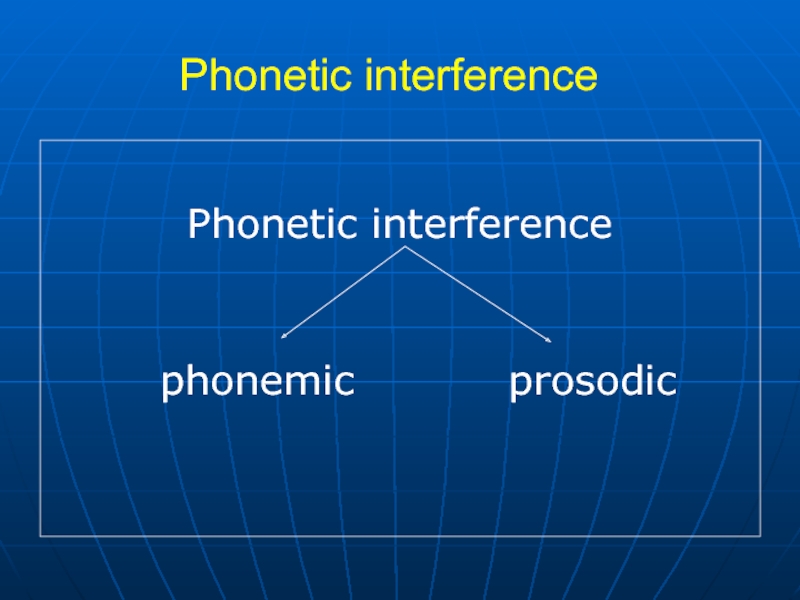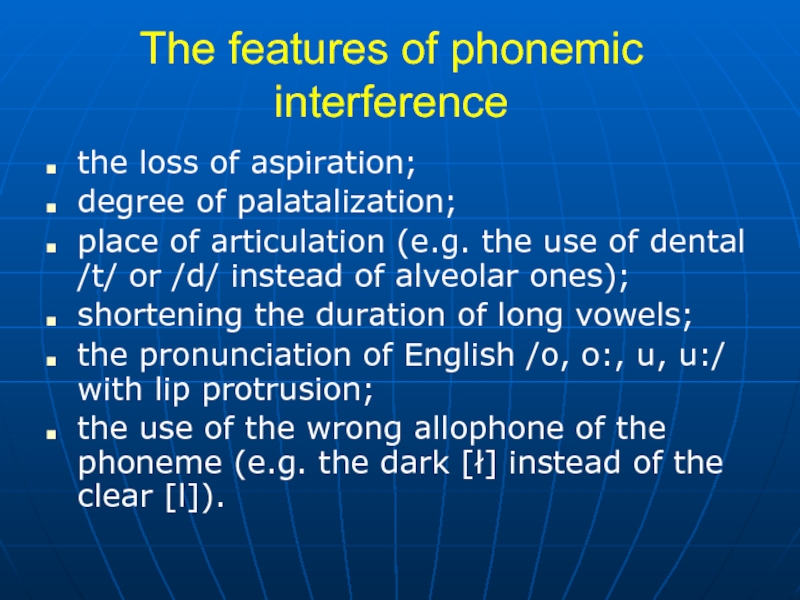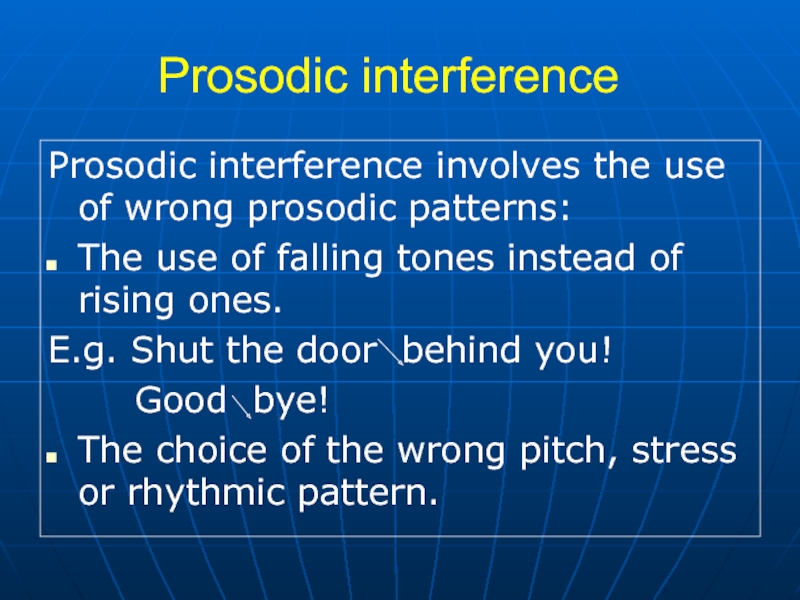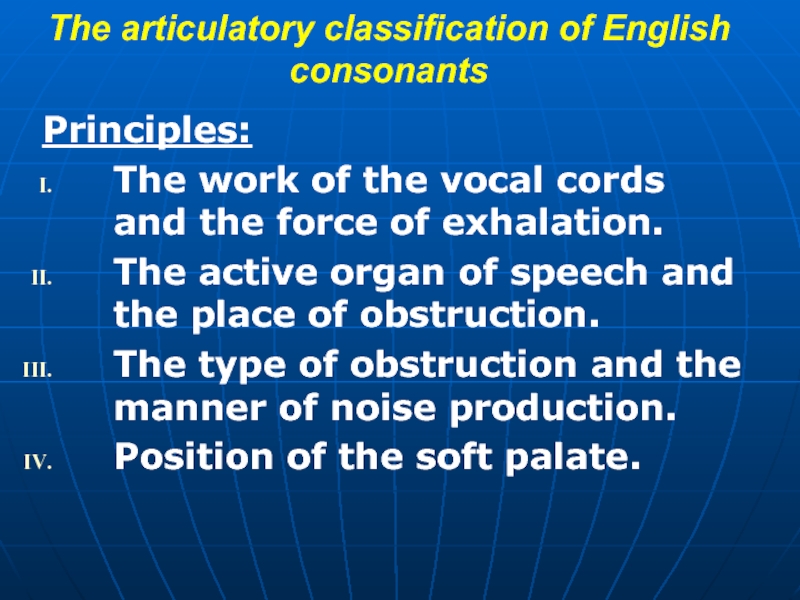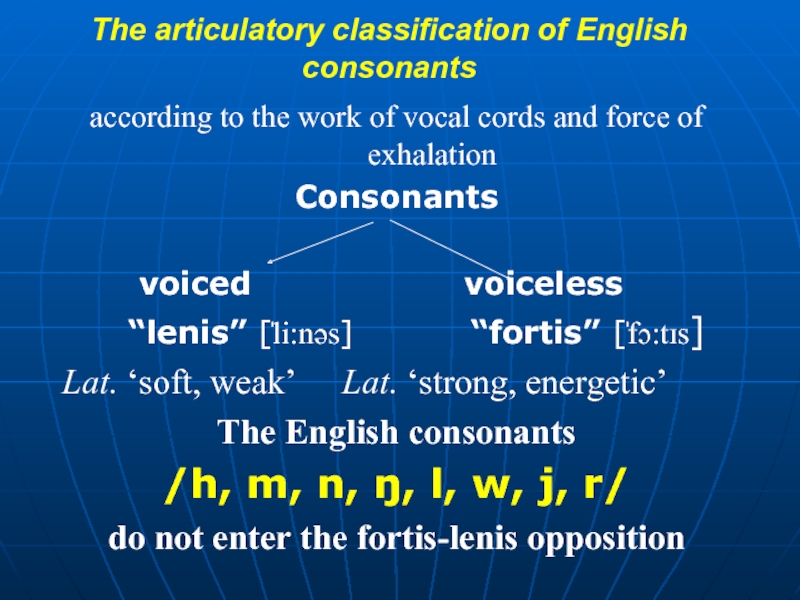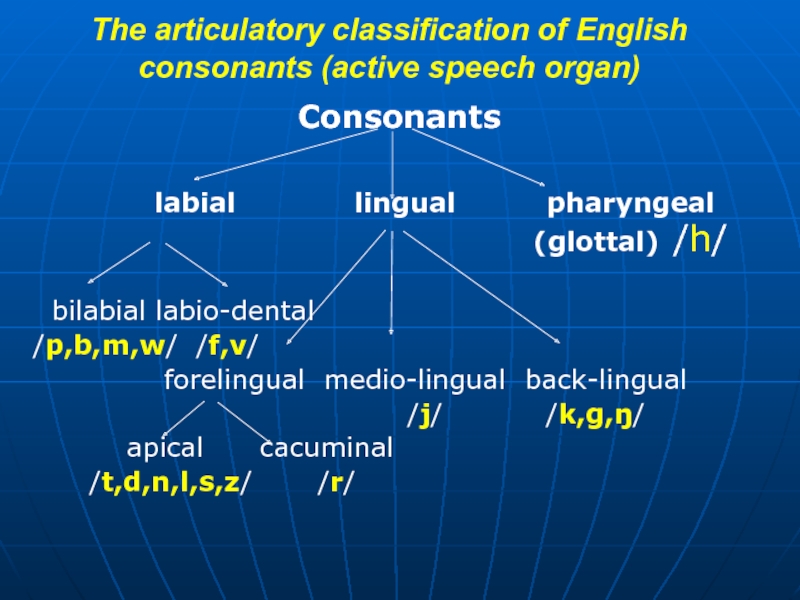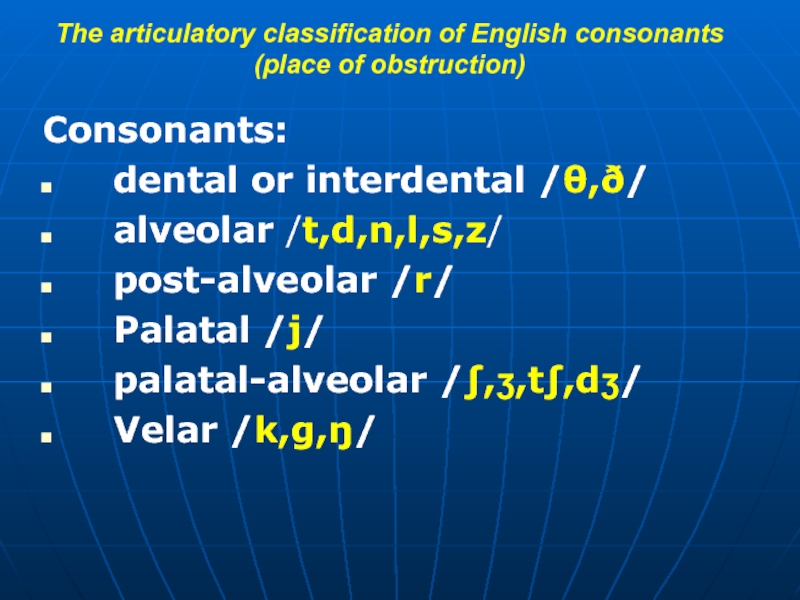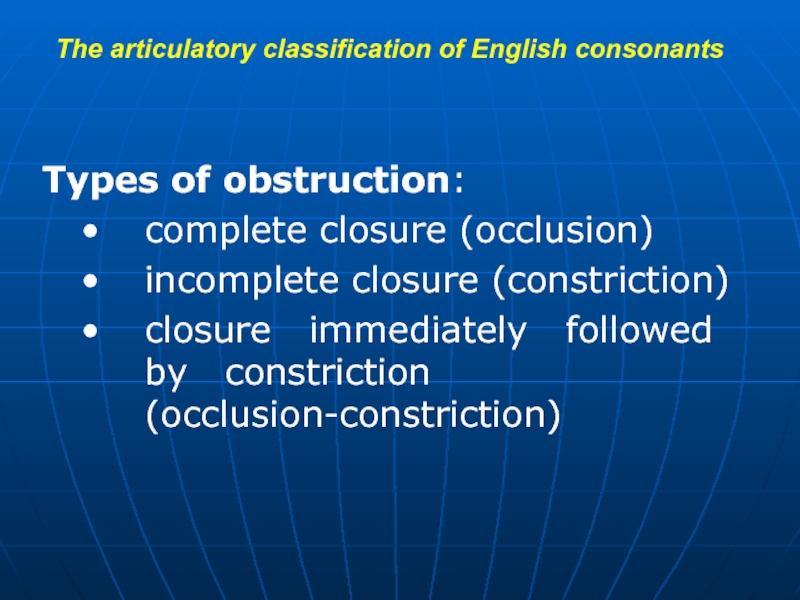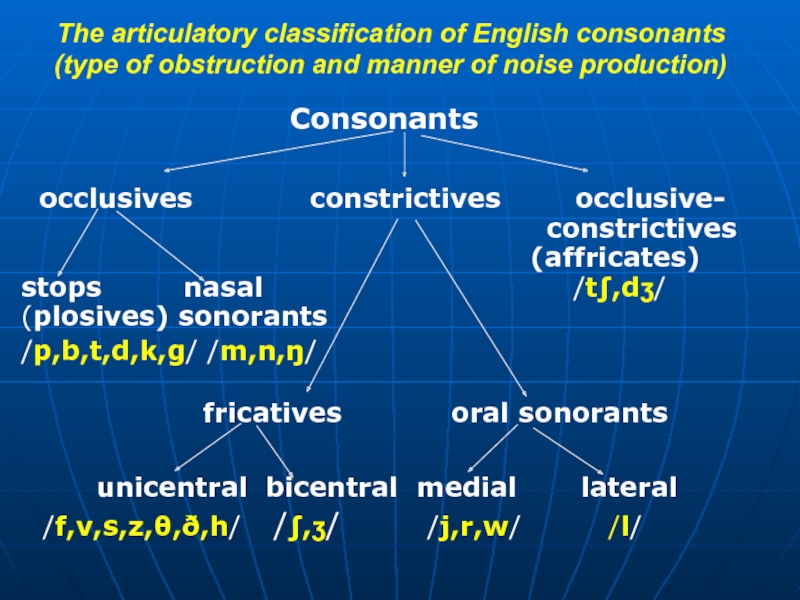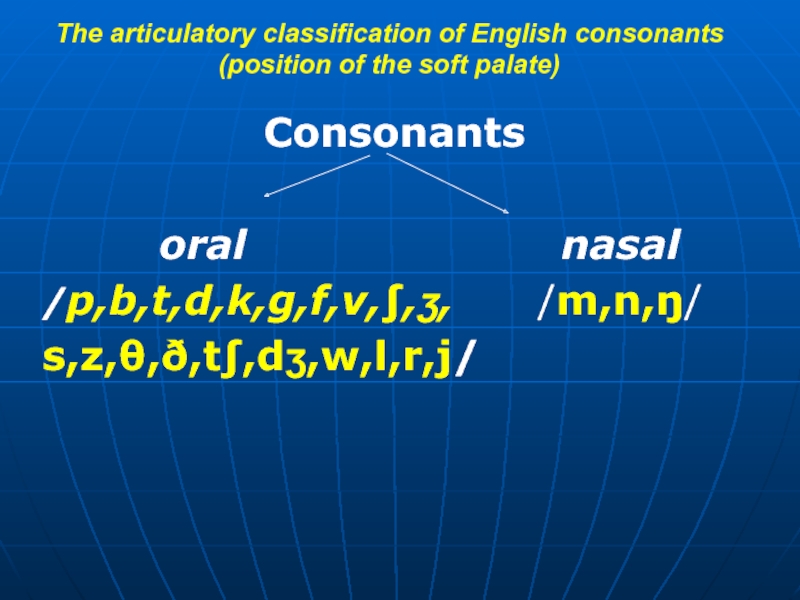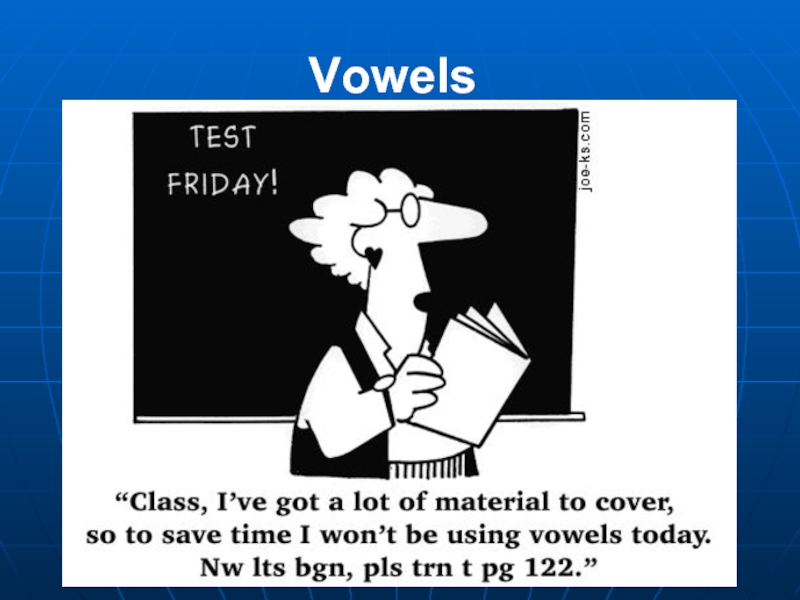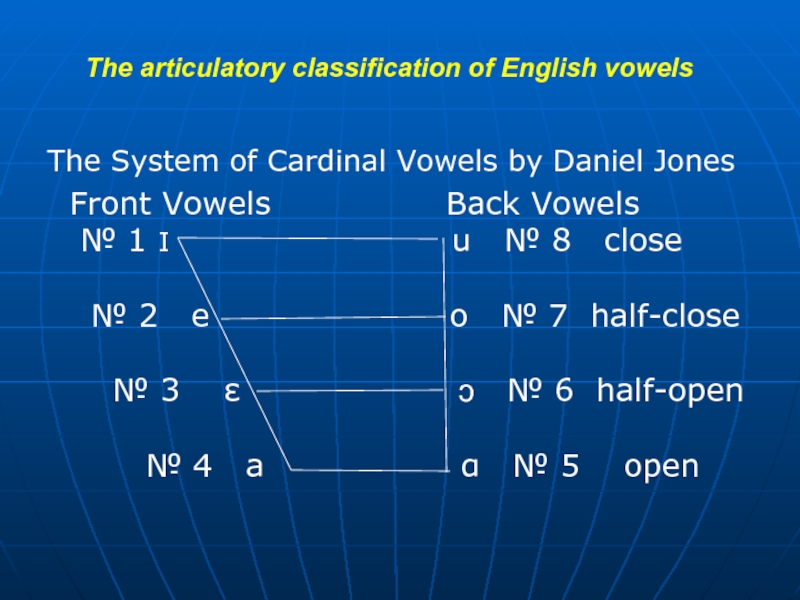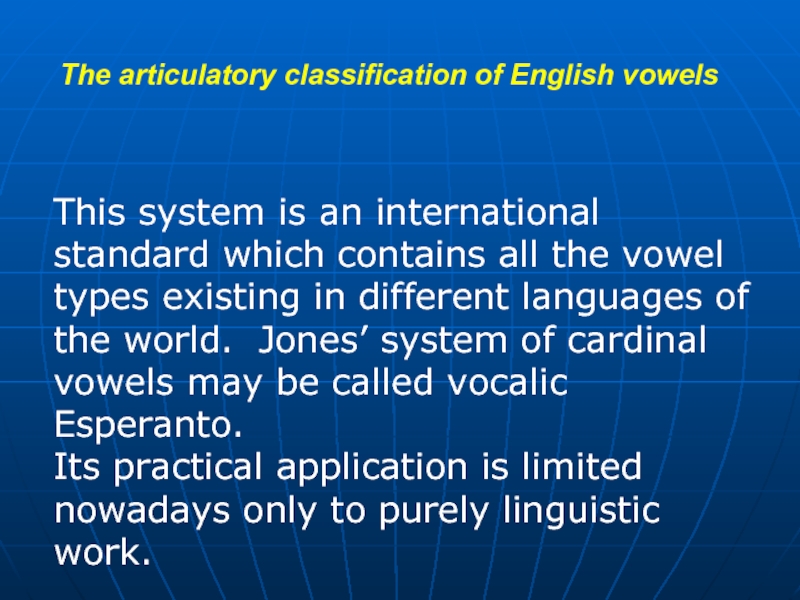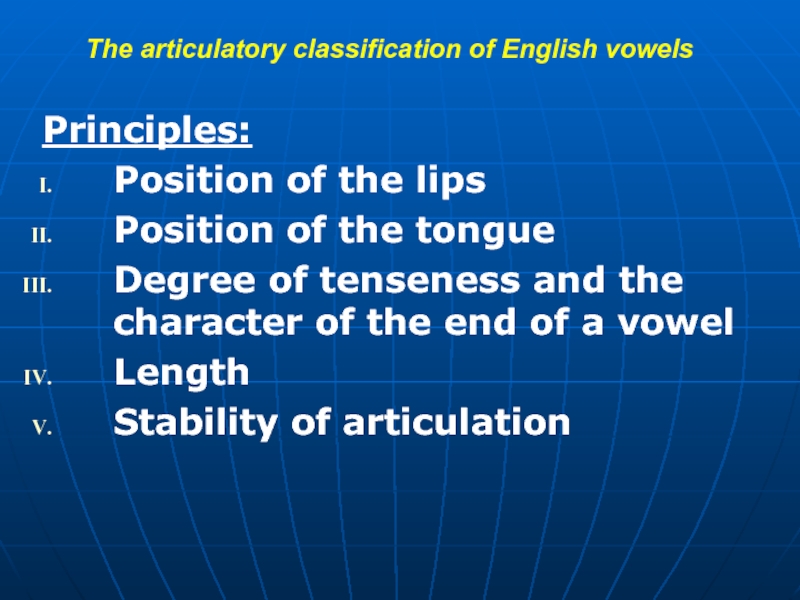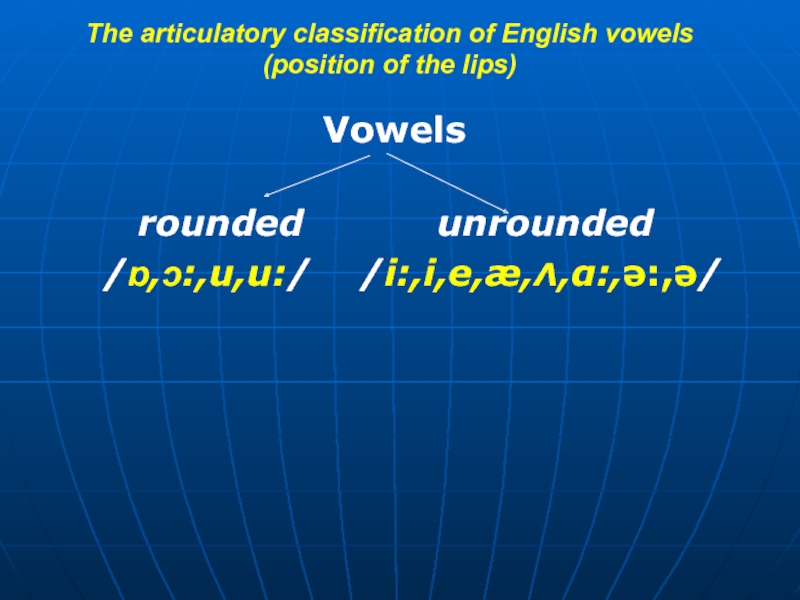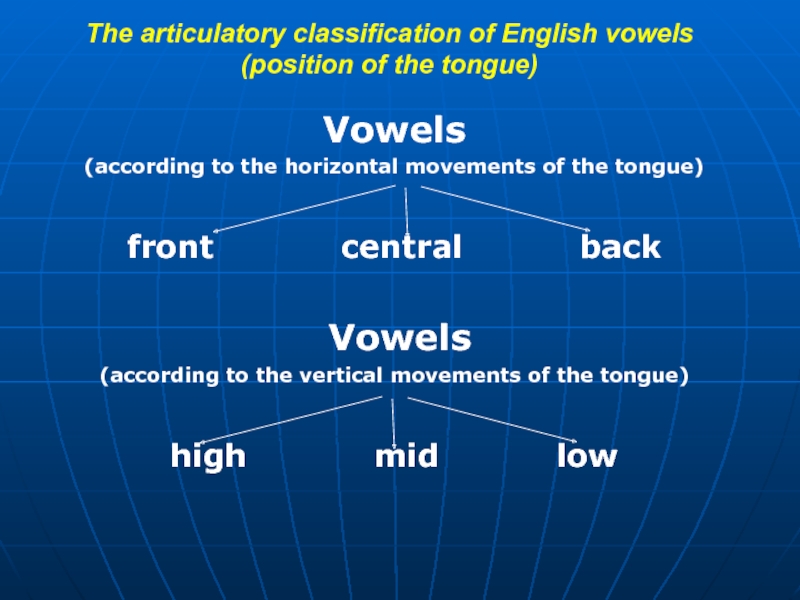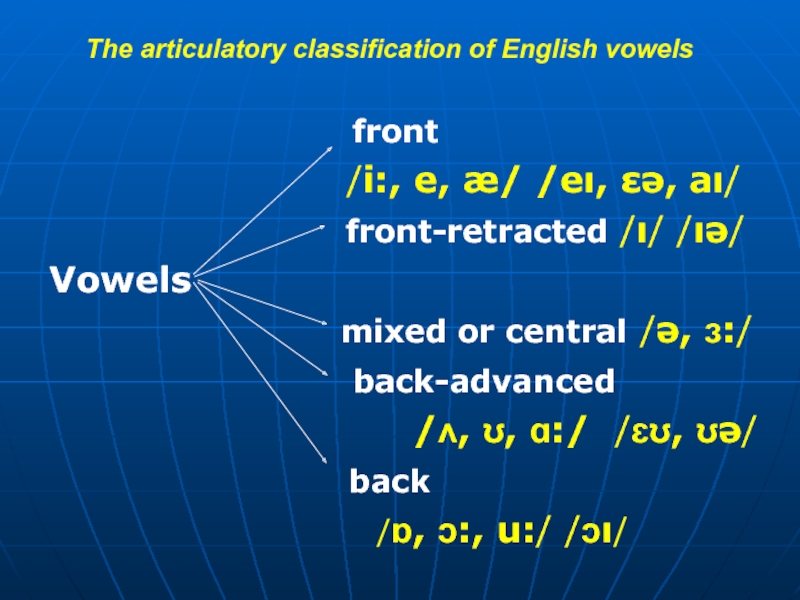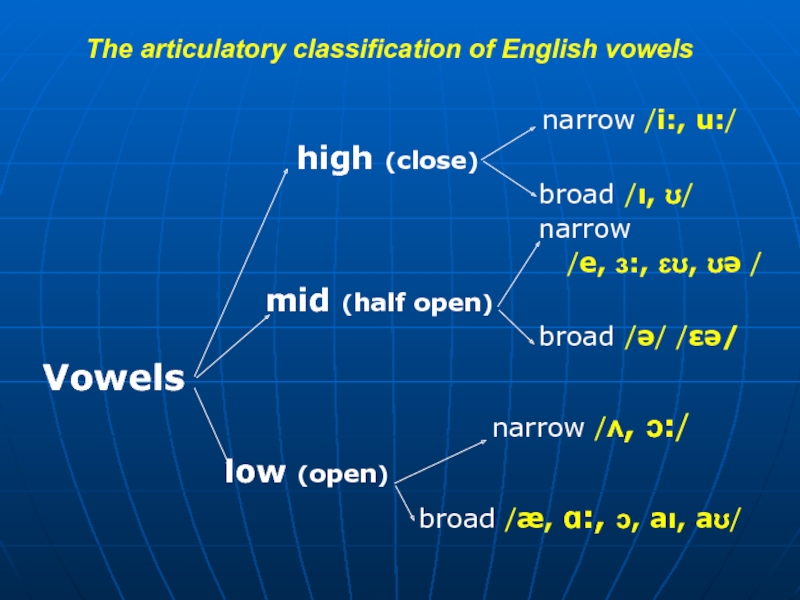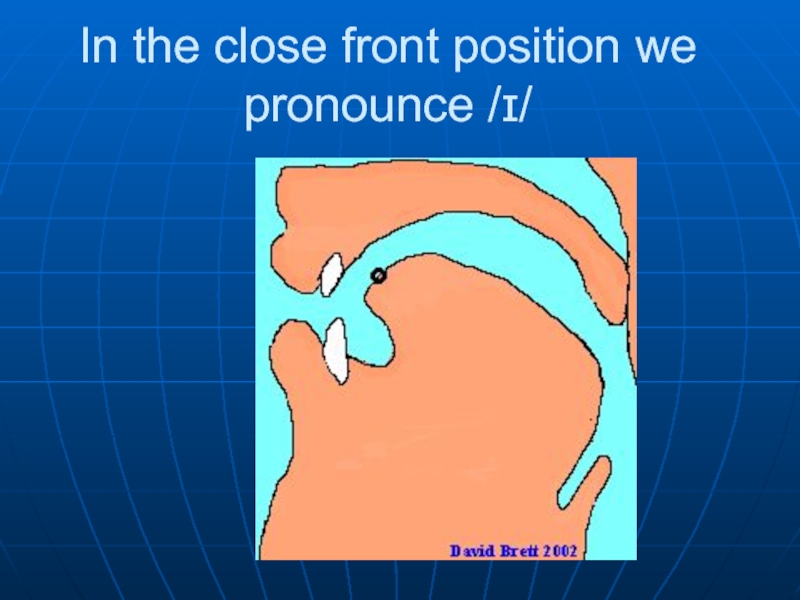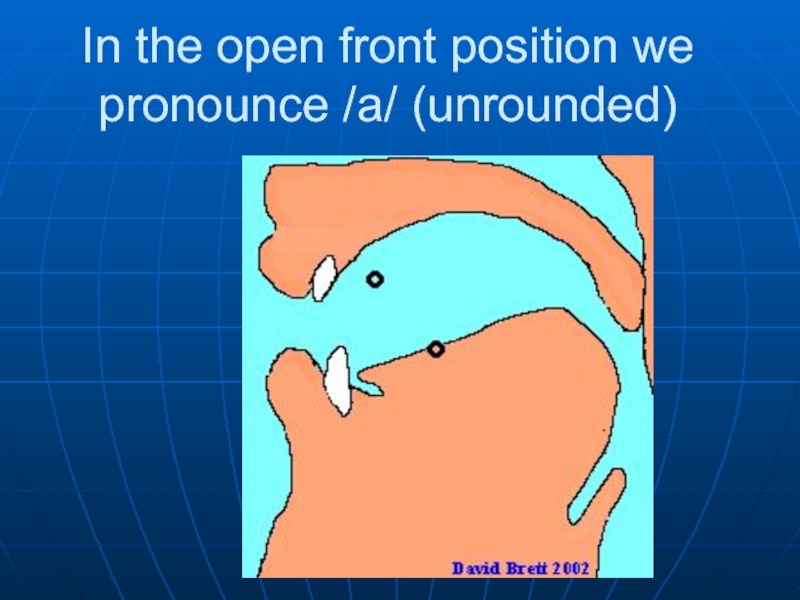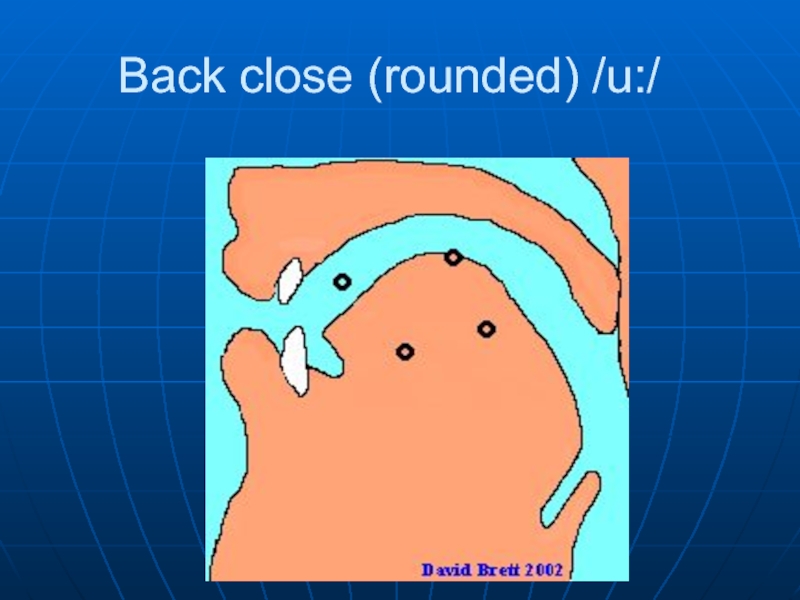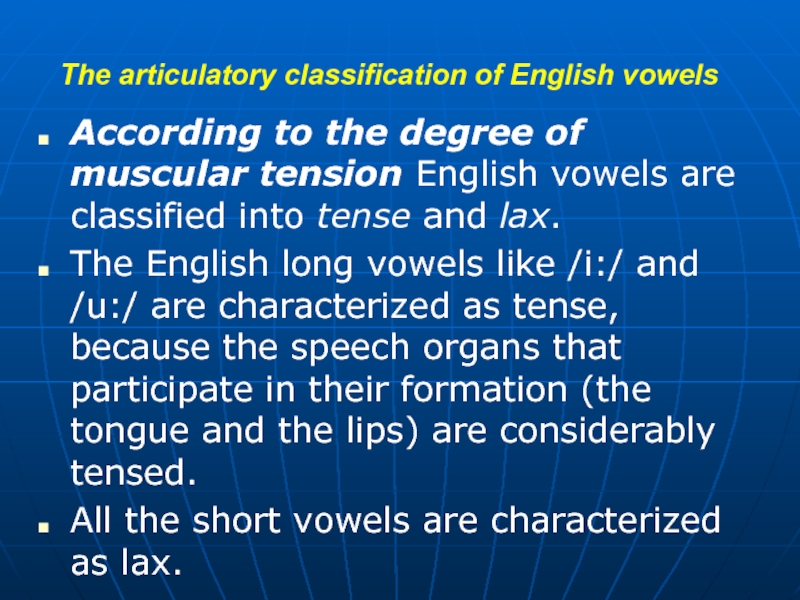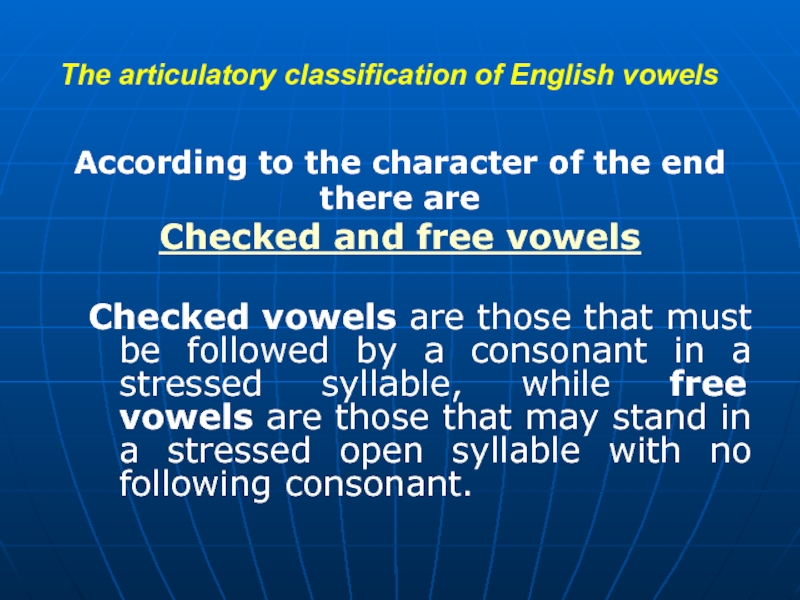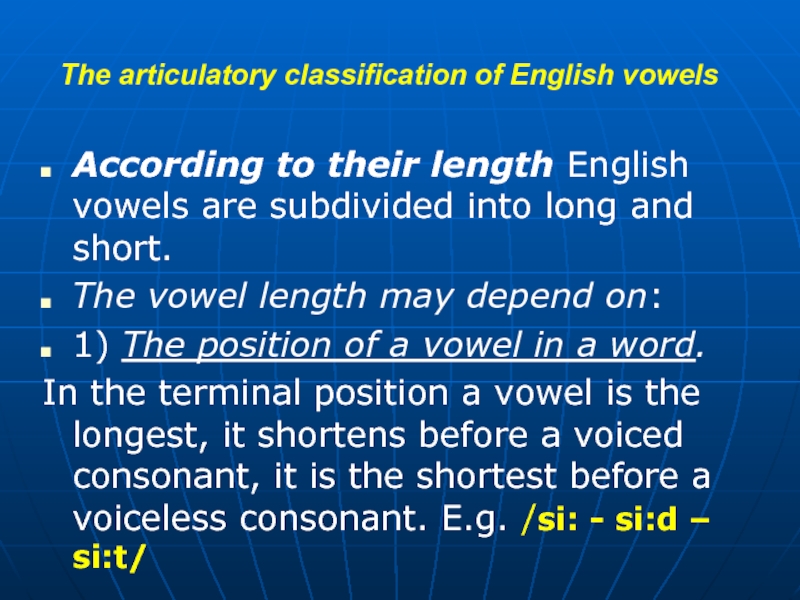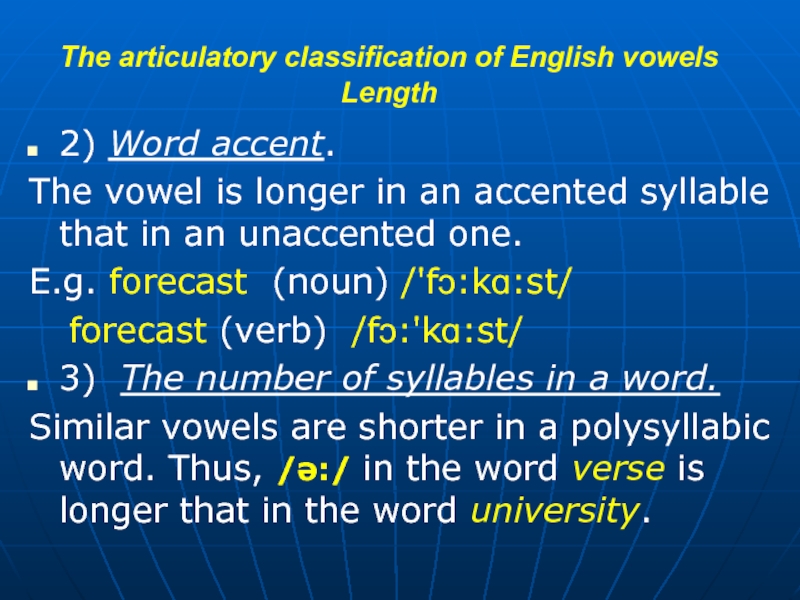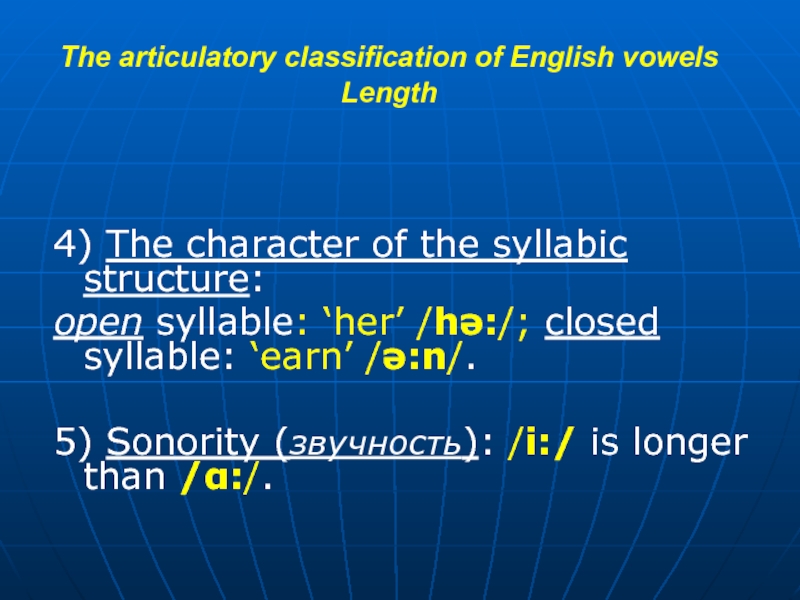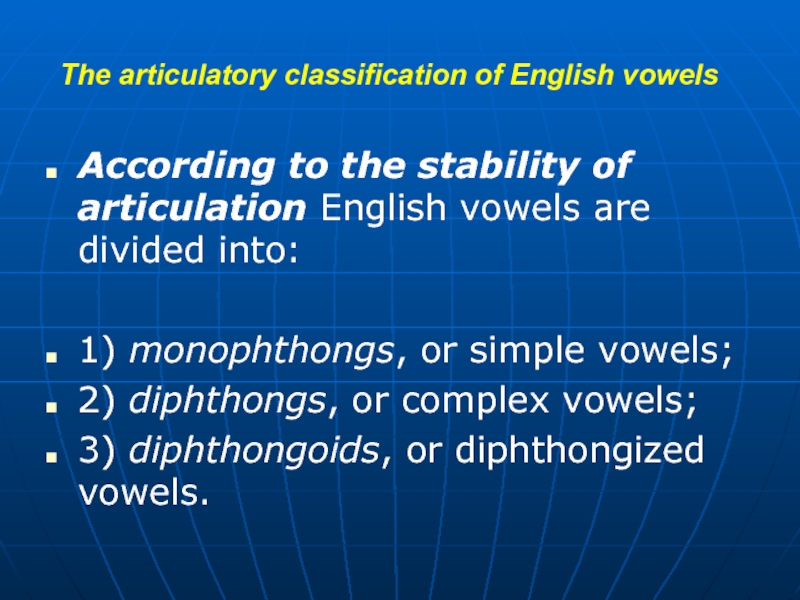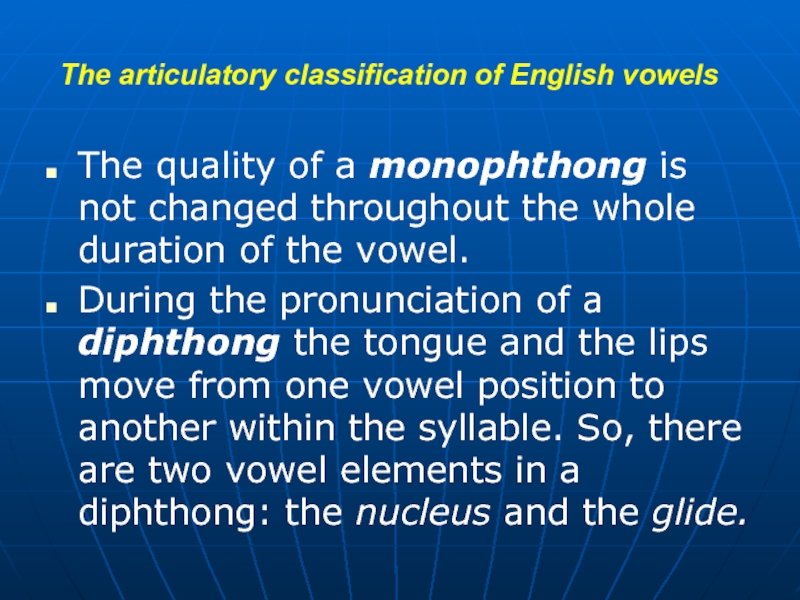- Главная
- Разное
- Дизайн
- Бизнес и предпринимательство
- Аналитика
- Образование
- Развлечения
- Красота и здоровье
- Финансы
- Государство
- Путешествия
- Спорт
- Недвижимость
- Армия
- Графика
- Культурология
- Еда и кулинария
- Лингвистика
- Английский язык
- Астрономия
- Алгебра
- Биология
- География
- Детские презентации
- Информатика
- История
- Литература
- Маркетинг
- Математика
- Медицина
- Менеджмент
- Музыка
- МХК
- Немецкий язык
- ОБЖ
- Обществознание
- Окружающий мир
- Педагогика
- Русский язык
- Технология
- Физика
- Философия
- Химия
- Шаблоны, картинки для презентаций
- Экология
- Экономика
- Юриспруденция
Articulatory Analysis of English Speech Sounds презентация
Содержание
- 1. Articulatory Analysis of English Speech Sounds
- 2. Principles of classification of English speech sounds
- 3. Articulation basis articulatory habits characteristic of all the native speakers of a language
- 4. The main peculiarities of the English
- 5. Phonetic interference Bilingualism – the practice of
- 6. Phonetic interference Phonetic interference
- 7. The features of phonemic interference the loss
- 8. Prosodic interference Prosodic interference involves the use
- 9. The articulatory classification of English consonants Principles:
- 10. The articulatory classification of English consonants according
- 11. The articulatory classification of English consonants
- 12. The articulatory classification of English consonants (active
- 13. The articulatory classification of English consonants (place
- 14. The articulatory classification of English consonants
- 15. The articulatory classification of English consonants (type
- 16. The articulatory classification of English consonants (position
- 17. Vowels
- 18. The articulatory classification of English vowels The
- 19. The articulatory classification of English vowels
- 20. The articulatory classification of English vowels Principles:
- 21. The articulatory classification of English vowels (position
- 22. The articulatory classification of English vowels (position
- 23. The articulatory classification of English vowels
- 24. The articulatory classification of English vowels
- 25. In the close front position we pronounce /ɪ/
- 26. In the open front position we pronounce /a/ (unrounded)
- 27. Back close (rounded) /u:/
- 28. The articulatory classification of English vowels According
- 29. The articulatory classification of English vowels According
- 30. The articulatory classification of English vowels According
- 31. The articulatory classification of English vowels Length
- 32. The articulatory classification of English vowels Length
- 33. The articulatory classification of English vowels According
- 34. The articulatory classification of English vowels The
- 35. The articulatory classification of English vowels All
- 36. The articulatory classification of English vowels
- 37. The physical properties of speech sounds Frequency
- 38. What differ vowels from consonants?
- 39. What consonant pair is this?
- 40. And this?
- 41. What is the difference between the two slides?
- 42. What is the difference between the two slides?
- 43. What fricative pair is this?
- 44. Name the fricatives
Слайд 1Articulatory Analysis of English Speech Sounds
Principles of classification of English speech
Articulation basis. Differences in the articulation bases of English and Russian.
Phonetic interference.
The articulatory classification of English consonants.
The articulatory classification of English vowels.
The physical properties of English speech sounds.
Слайд 2Principles of classification of English speech sounds
speech sounds
noise consonants
sonorants
/m, n, ŋ, l, w, j, r/
Principles of classification:
The presence or absence of obstruction.
The distribution of muscular tension.
The force of the air stream coming from the lungs.
Слайд 3Articulation basis
articulatory habits characteristic of all the native speakers of a
Слайд 4
The main peculiarities of the English articulation basis
The tongue is broadened,
Lips are neutral, slightly spread, the upper lip is tense.
Слайд 5Phonetic interference
Bilingualism – the practice of alternate use of two languages
Language interference – a process and a result of interaction and mutual influence of the language systems which are in contact.
Phonetic interference – the deviation from the phonetic norms of the language.
Слайд 7The features of phonemic interference
the loss of aspiration;
degree of palatalization;
place of
shortening the duration of long vowels;
the pronunciation of English /o, o:, u, u:/ with lip protrusion;
the use of the wrong allophone of the phoneme (e.g. the dark [ł] instead of the clear [l]).
Слайд 8Prosodic interference
Prosodic interference involves the use of wrong prosodic patterns:
The use
E.g. Shut the door behind you!
Good bye!
The choice of the wrong pitch, stress or rhythmic pattern.
Слайд 9The articulatory classification of English consonants
Principles:
The work of the vocal cords
The active organ of speech and the place of obstruction.
The type of obstruction and the manner of noise production.
Position of the soft palate.
Слайд 10The articulatory classification of English consonants
according to the work of vocal
Consonants
voiced voiceless
“lenis” [̍li:nəs] “fortis” [̍fɔ:tɪs]
Lat. ‘soft, weak’ Lat. ‘strong, energetic’
The English consonants
/h, m, n, ŋ, l, w, j, r/
do not enter the fortis-lenis opposition
Слайд 12The articulatory classification of English consonants (active speech organ)
Consonants
(glottal) /h/
bilabial labiodental
/p,b,m,w/ /f,v/
forelingual medio-lingual back-lingual
/j/ /k,g,ŋ/
apical cacuminal
/t,d,n,l,s,z/ /r/
Слайд 13The articulatory classification of English consonants (place of obstruction)
Consonants:
dental or interdental
alveolar /t,d,n,l,s,z/
post-alveolar /r/
Palatal /j/
palatal-alveolar /∫,ʒ,t∫,dʒ/
Velar /k,g,ŋ/
Слайд 14The articulatory classification of English consonants
Types of obstruction:
complete closure (occlusion)
incomplete closure
closure immediately followed by constriction (occlusion-constriction)
Слайд 15The articulatory classification of English consonants (type of obstruction and manner
Consonants
occlusives constrictives occlusive-
constrictives
(affricates)
stops nasal /t∫,dʒ/
(plosives) sonorants
/p,b,t,d,k,g/ /m,n,ŋ/
fricatives oral sonorants
unicentral bicentral medial lateral
/f,v,s,z,θ,ð,h/ /∫,ʒ/ /j,r,w/ /l/
Слайд 16The articulatory classification of English consonants (position of the soft palate)
Consonants
/p,b,t,d,k,g,f,v,∫,ʒ, /m,n,ŋ/
s,z,θ,ð,t∫,dʒ,w,l,r,j/
Слайд 18The articulatory classification of English vowels
The System of Cardinal Vowels by
Front Vowels Back Vowels
№ 1 I u № 8 close
№ 2 e o № 7 half-close
№ 3 ε ɔ № 6 half-open
№ 4 a α № 5 open
Слайд 19The articulatory classification of English vowels
This system is an international standard
Its practical application is limited nowadays only to purely linguistic work.
Слайд 20The articulatory classification of English vowels
Principles:
Position of the lips
Position of the
Degree of tenseness and the character of the end of a vowel
Length
Stability of articulation
Слайд 21The articulatory classification of English vowels (position of the lips)
Vowels
/ɒ,ɔ:,u,u:/ /i:,i,e,æ,Λ,α:,ə:,ə/
Слайд 22The articulatory classification of English vowels (position of the tongue)
Vowels
(according to
front central back
Vowels
(according to the vertical movements of the tongue)
high mid low
Слайд 23The articulatory classification of English vowels
/i:, e, æ/ /eı, εə, aı/
front-retracted /ı/ /ıə/
Vowels
mixed or central /ə, ɜ:/
back-advanced
/ʌ, ʊ, ɑ:/ /ɛʊ, ʊə/
back
/ɒ, ɔ:, u:/ /ɔı/
Слайд 24The articulatory classification of English vowels
high (close)
broad /ı, ʊ/
narrow
/e, ɜ:, ɛʊ, ʊə /
mid (half open)
broad /ə/ /εə/
Vowels
narrow /ʌ, ɔ:/
low (open)
broad /æ, ɑ:, ɔ, aı, aʊ/
Слайд 28The articulatory classification of English vowels
According to the degree of muscular
The English long vowels like /i:/ and /u:/ are characterized as tense, because the speech organs that participate in their formation (the tongue and the lips) are considerably tensed.
All the short vowels are characterized as lax.
Слайд 29The articulatory classification of English vowels
According to the character of the
there are
Checked and free vowels
Checked vowels are those that must be followed by a consonant in a stressed syllable, while free vowels are those that may stand in a stressed open syllable with no following consonant.
Слайд 30The articulatory classification of English vowels
According to their length English vowels
The vowel length may depend on:
1) The position of a vowel in a word.
In the terminal position a vowel is the longest, it shortens before a voiced consonant, it is the shortest before a voiceless consonant. E.g. /si: - si:d – si:t/
Слайд 31The articulatory classification of English vowels
Length
2) Word accent.
The vowel is longer
E.g. forecast (noun) /'fɔ:kɑ:st/
forecast (verb) /fɔ:'kɑ:st/
3) The number of syllables in a word.
Similar vowels are shorter in a polysyllabic word. Thus, /ə:/ in the word verse is longer that in the word university.
Слайд 32The articulatory classification of English vowels
Length
4) The character of the syllabic
open syllable: ‘her’ /hə:/; closed syllable: ‘earn’ /ə:n/.
5) Sonority (звучность): /i:/ is longer than /α:/.
Слайд 33The articulatory classification of English vowels
According to the stability of articulation
1) monophthongs, or simple vowels;
2) diphthongs, or complex vowels;
3) diphthongoids, or diphthongized vowels.
Слайд 34The articulatory classification of English vowels
The quality of a monophthong is
During the pronunciation of a diphthong the tongue and the lips move from one vowel position to another within the syllable. So, there are two vowel elements in a diphthong: the nucleus and the glide.
Слайд 35The articulatory classification of English vowels
All English diphthongs are falling (nucleus+glide).
A rising diphthong begins with a glide and ends in a nucleus (glide+nucleus). Such diphthongs are common in Italian, Spanish, etc.
Слайд 36The articulatory classification of English vowels
A diphthongoid is a vowel sound
Слайд 37The physical properties of speech sounds
Frequency – the number of vibrations
Intensity – variations in the loudness of the sound.
Duration – the quantity of time during which the same vibratory motion is produced.
